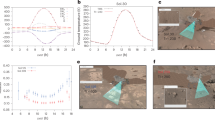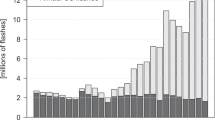Abstract
THE series of curves given by Messrs. Lander and Smith's instruments, and published in NATURE of March 15, are most interesting, and one cannot help looking for the cause, of the close relation between the movements of all the five instruments. It is with the view of offering an explanation of the sympathy between these instruments that the following lines are written. If I might venture to suggest a first cause of these movements, I would say it was the thunderstorm that drew the trigger which started all of them. The thunderstorm gave rise to a heavy fall of rain—a quarter of an inch in a few minutes—and this rainfall appears to have been the cause of the movement of all the instruments, and instead of being placed last in the series should have been put first. The effect of a heavy local fall of rain is to cause a down rush of air, the air being dragged downwards by the falling rain. This downward moving mass of air checks the wind, because its movement is at right-angles to the wind, hence the drop in the wind-velocity curve. The wind not being able to pursue its course gets deflected—in this case the curve shows it was to the north-west. The down rush of air where it meets the surface of the earth has its velocity reduced and direction of movement changed; its pressure is therefore increased, and the barograph shows that the pressure increased by the tenth of an inch. The downward rush of air would bring the air from the upper strata to the surface of the earth, and as this upper air would be in all probability the colder, it would cause a fall in the temperature, which the thermograph shows amounted to twelve degrees.
This is a preview of subscription content, access via your institution
Access options
Subscribe to this journal
Receive 51 print issues and online access
$199.00 per year
only $3.90 per issue
Buy this article
- Purchase on SpringerLink
- Instant access to full article PDF
Prices may be subject to local taxes which are calculated during checkout
Similar content being viewed by others
Author information
Authors and Affiliations
Rights and permissions
About this article
Cite this article
AITKEN, J. Interpretation of Meteorological Records. Nature 73, 485 (1906). https://doi.org/10.1038/073485a0
Issue date:
DOI: https://doi.org/10.1038/073485a0



